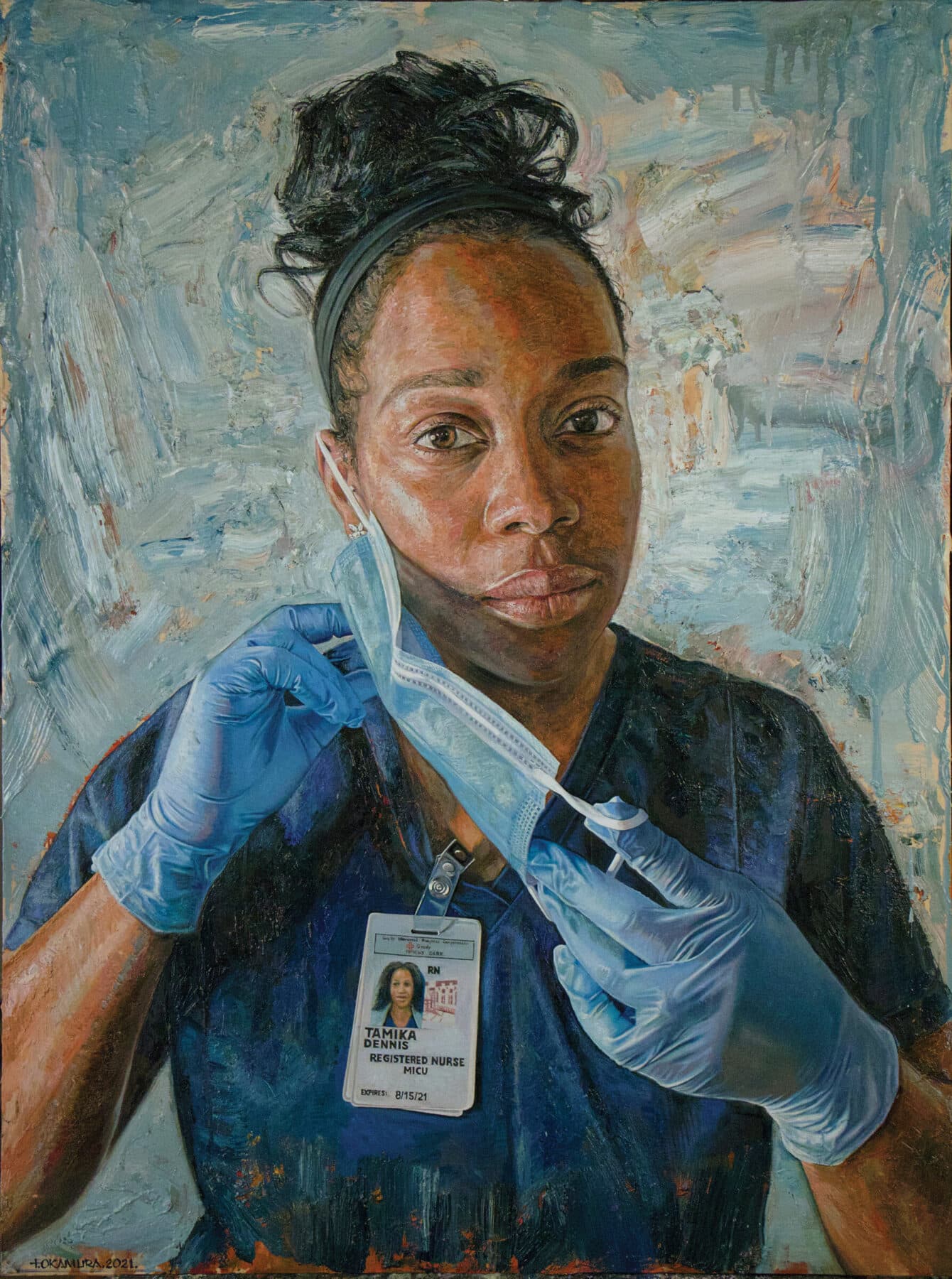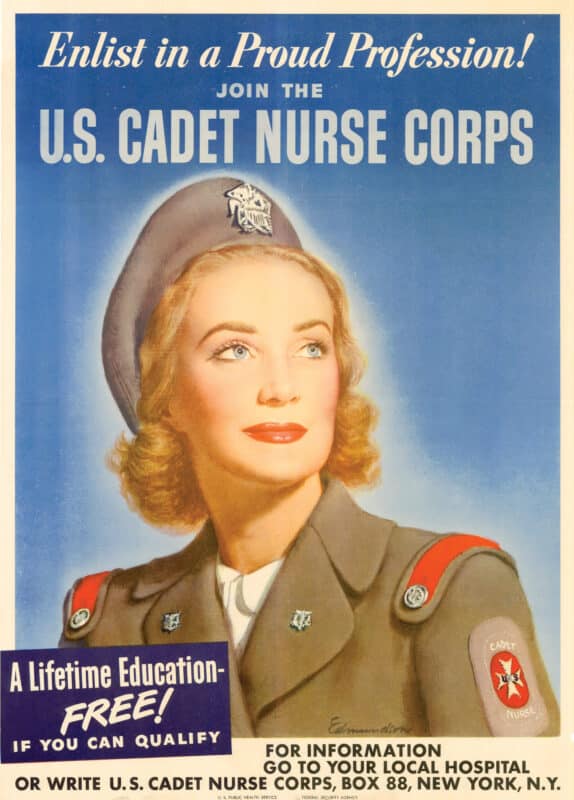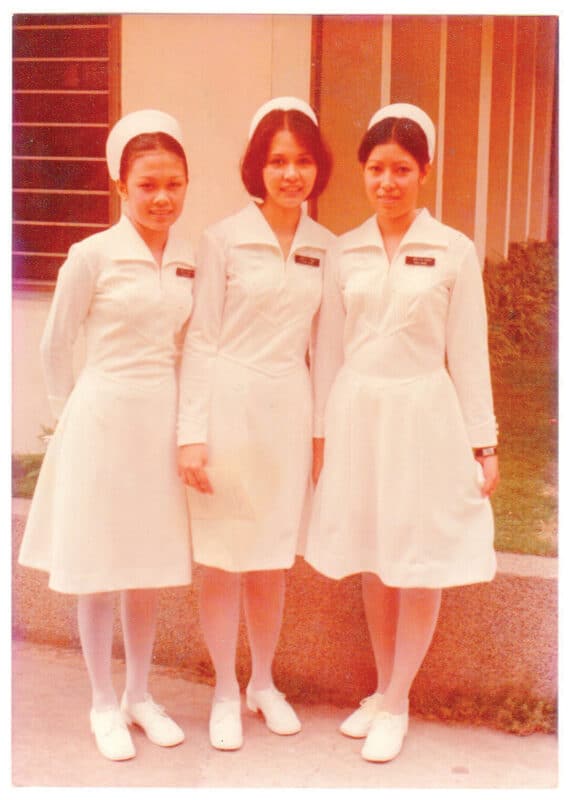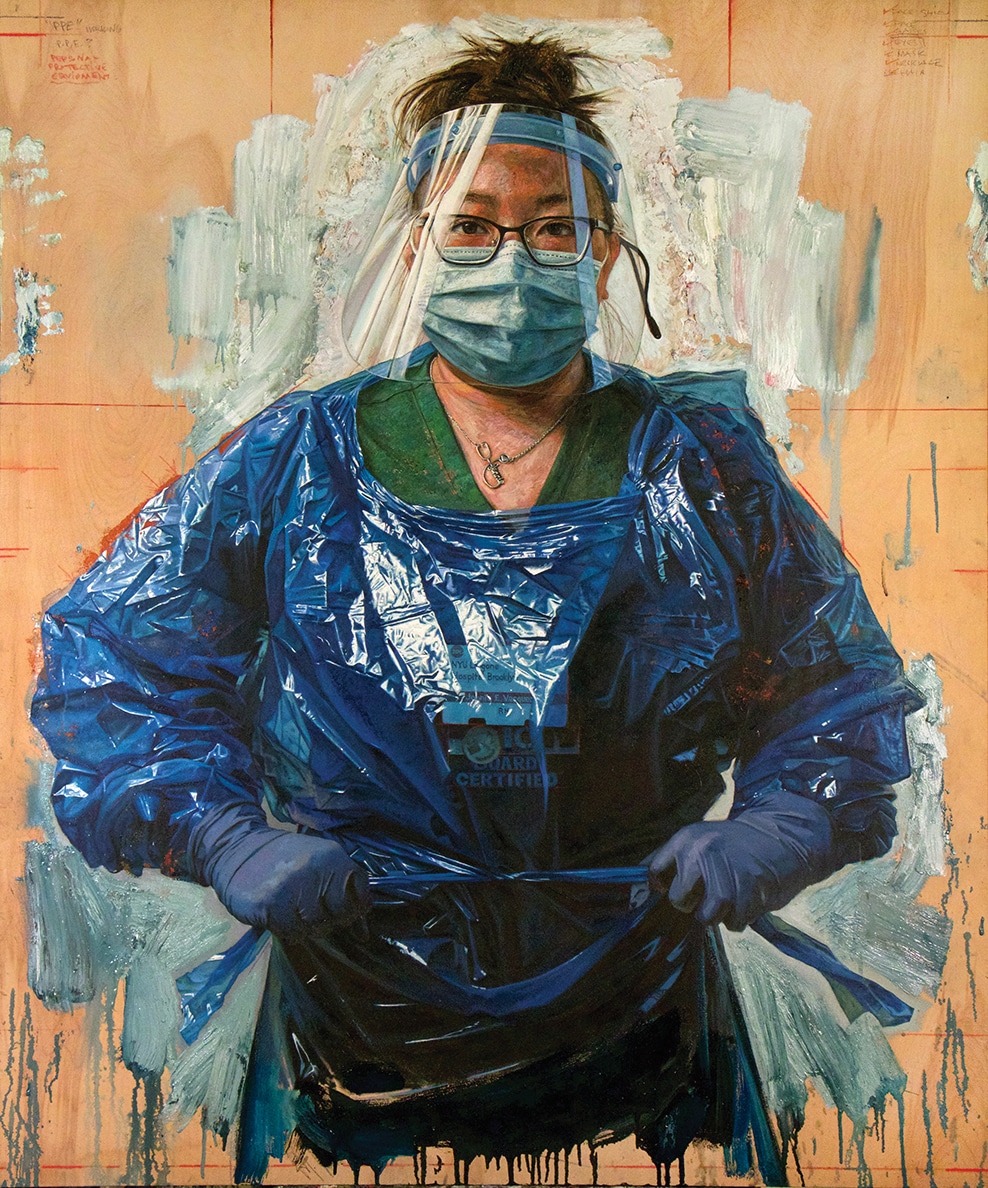Visions of Nursing
From caps to scrubs, exemplars to essential (and exhausted) workers, the many changes in the profession over the past half-century have been reflected in nursing’s representations in visual art and culture.

During conflict or crisis—from wars and pandemics to individual health emergencies—nurses are often depicted in art as heroes and saviors. The necessity and respect for nurses’ professional care emerges most conspicuously in these moments, exemplified in the early days of the COVID-19 pandemic by the signs thanking health care workers that sprouted on windows and lawns.

But nursing has been depicted in many ways as it evolved into a formalized profession over the nineteenth and twentieth centuries. From caps to scrubs, exemplars to essential (and exhausted) workers, the many changes in the profession over the past half-century have been reflected in nursing’s representations in visual art and culture.
During World War II, government propaganda posters depicted nursing as a heroic choice in a bid to meet growing wartime needs. “Enlist in a proud profession!” blared advertisements for the US Cadet Nurse Corps, which featured and were aimed predominantly at women. The nurse on one 1943 poster—a perfectly coiffed, blonde, blue-eyed cadet in uniform haloed against a blue ground—appears at once angelic, inspirational, and professional, her idealized beauty playing no small part in the vision of success that the poster aimed to project.

The government-sponsored images of nurses in 1943 did not yet reflect the true diversity of the profession. After the war ended, a severe nursing shortage led the United States to recruit more nurses beyond its borders, informed by its colonial legacy. The United States had instated Americanized nursing training programs in the Philippines since colonizing the country in 1898, and the combination of this educational system along with postwar legislation that encouraged migration enabled many more Filipina nurses to fill the country’s needs for professional care. A 1976 graduation photograph of Rizalita Legaspi Aniel, Neruta Ladia, and Norma Lesada shows the three smiling new nurses in their starched, all-white uniforms and caps, representing at once the United States’ colonial past and its diversifying future.
A drawing by Virginia Powell from the mid-1990s shows the further evolution of nursing as it relates to technology and training. The nurse sits at the bedside of a patient wearing an oxygen mask, monitoring the patient’s condition after an operation. With the advent of ever-more advanced medical technology came changes in nurses’ roles and education, including a shift from providing predominantly physical care to managing equipment and reading increasingly detailed monitors and scans. Keith Holmes’s early 1990s portrait, Nurse in Red, also reflects this increasing professionalization through the equipment in the background and the nurse’s calm face and commanding pose, conveying her authority and expertise as she points beyond the frame with her gloved hand. Both works also show how nurses’ uniforms continued to evolve over the decades. The nurse’s red uniform includes a skirt and apron but no starched cap, which, although still strongly symbolic of the nursing profession, has gradually been eliminated for reasons of hygiene, practicality, and gender equality. Meanwhile, Powell’s modern nurse wears scrubs and a hygienic bouffant cap, pushed back but still in place from the operating room.


Today, the practicality of scrubs and personal protective equipment (PPE) predominates among nursing uniforms. In 2020, Tim Okamura began painting highly realistic portraits of nurses during the early height of the COVID-19 pandemic, including face masks and shields that drive home the frontline nature of their roles. His painting of Jennie Vasquez shows her girding herself with layers of PPE in preparation for her work, while an image of Tamika Dennis reveals the more vulnerable aftermath of a shift as she removes her mask. These works are a far cry from the gloss of wartime propaganda posters, instead recognizing the precarity and humanness of the profession as overwork and understaffing continue to threaten public health.

The pandemic’s stresses on the health care system and its workers over the past several years have fueled numerous nurses’ strikes for better staffing and support to provide adequate care for patients. At one such strike at a Kaiser Permanente hospital in 2021, nurses held signs that read, “Heroes treated like zeroes.” Photographs like these illustrate the tensions that underpin the profession as well as its depictions: nurses continue to be highly valorized but are often given inadequate support to do their difficult and demanding jobs. Still, representations of nurses continue to adapt just as the profession does—to new challenges, new mediums, and new visions of what a nurse can be.

